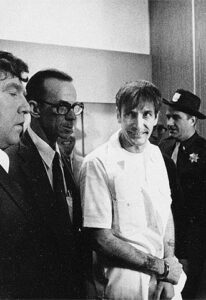 In the world of criminal justice, you might think that the punishment should fit the crime, and in that case, murder should get the death penalty. Of course, no one would dispute the fact that there could be extenuating circumstances. Sometimes, the murder was accidental, or the perpetrator was truly insane, whether temporarily or permanently. Those aren’t the common reasons for murder though. Nevertheless, there are those who believe that there shouldn’t be a death penalty for any reason. They call it cruel and unusual punishment, even if the perpetrator is not sorry for their crime, but the reality is that the killer took a life, and that should usually bring the death penalty.
In the world of criminal justice, you might think that the punishment should fit the crime, and in that case, murder should get the death penalty. Of course, no one would dispute the fact that there could be extenuating circumstances. Sometimes, the murder was accidental, or the perpetrator was truly insane, whether temporarily or permanently. Those aren’t the common reasons for murder though. Nevertheless, there are those who believe that there shouldn’t be a death penalty for any reason. They call it cruel and unusual punishment, even if the perpetrator is not sorry for their crime, but the reality is that the killer took a life, and that should usually bring the death penalty.
Over the years, there have been multiple pushes by activist groups that were against the death penalty under any circumstances. Finally, in the case of Furman v. Georgia, the US Supreme Court ruled by a vote of 5-4 that capital punishment, as it is currently employed on the state and federal level, is unconstitutional. In that case, the majority of the judges held that, “in violation of the Eighth Amendment to the Constitution, the death penalty qualified as  ‘cruel and unusual punishment,’ primarily because states employed execution in ‘arbitrary and capricious ways,’ especially in regard to race.” That decision was the first time that the nation’s highest court had ruled against capital punishment. In the case, they didn’t say that the death penalty, in and of itself, was unconstitutional, but rather left room for new legislation that could make death sentences constitutional again. These included the development of standardized guidelines for uries that decide sentences. Because there was room for changes to the way things were done, the decision was not an outright victory for opponents of the death penalty.
‘cruel and unusual punishment,’ primarily because states employed execution in ‘arbitrary and capricious ways,’ especially in regard to race.” That decision was the first time that the nation’s highest court had ruled against capital punishment. In the case, they didn’t say that the death penalty, in and of itself, was unconstitutional, but rather left room for new legislation that could make death sentences constitutional again. These included the development of standardized guidelines for uries that decide sentences. Because there was room for changes to the way things were done, the decision was not an outright victory for opponents of the death penalty.
Finally, in 1976, with 66 percent of Americans still supporting capital punishment, the Supreme Court acknowledged that progress had been made in jury guidelines and reinstated the death penalty under a “model of guided discretion.” Then in 1977, Gary Gilmore, a career criminal who had murdered an elderly couple simply because they would not lend him their car, was the first person to be executed since the end of the ban. Gilmore was defiant…facing a firing squad in Utah. His last words to his executioners before they shot him through the heart were, “Let’s do it.” Gilmore was one of those criminals who had no respect for life…not even his own. He was a brutal killer, and he died a justified death. He wasn’t brave at the time of his death. He was  just stubborn and defiant. I suppose he might have seen himself as a martyr, but the reality was that he was simply a cold-blooded criminal, who got what he deserved…the same thing he gave to his victims. Some of his victims even cooperated, but it made no difference. He killed them anyway. He received exactly what he should have…and he wanted it too. During the time Gilmore was on death row awaiting his execution, he attempted suicide twice; the first time on November 16 after the first stay was issued, and again one month later on December 16. On the day of his execution, he was smiling as he was led to the chair the strapped him to for his execution. Gilmore was put to death on January 17, 1977.
just stubborn and defiant. I suppose he might have seen himself as a martyr, but the reality was that he was simply a cold-blooded criminal, who got what he deserved…the same thing he gave to his victims. Some of his victims even cooperated, but it made no difference. He killed them anyway. He received exactly what he should have…and he wanted it too. During the time Gilmore was on death row awaiting his execution, he attempted suicide twice; the first time on November 16 after the first stay was issued, and again one month later on December 16. On the day of his execution, he was smiling as he was led to the chair the strapped him to for his execution. Gilmore was put to death on January 17, 1977.


Leave a Reply